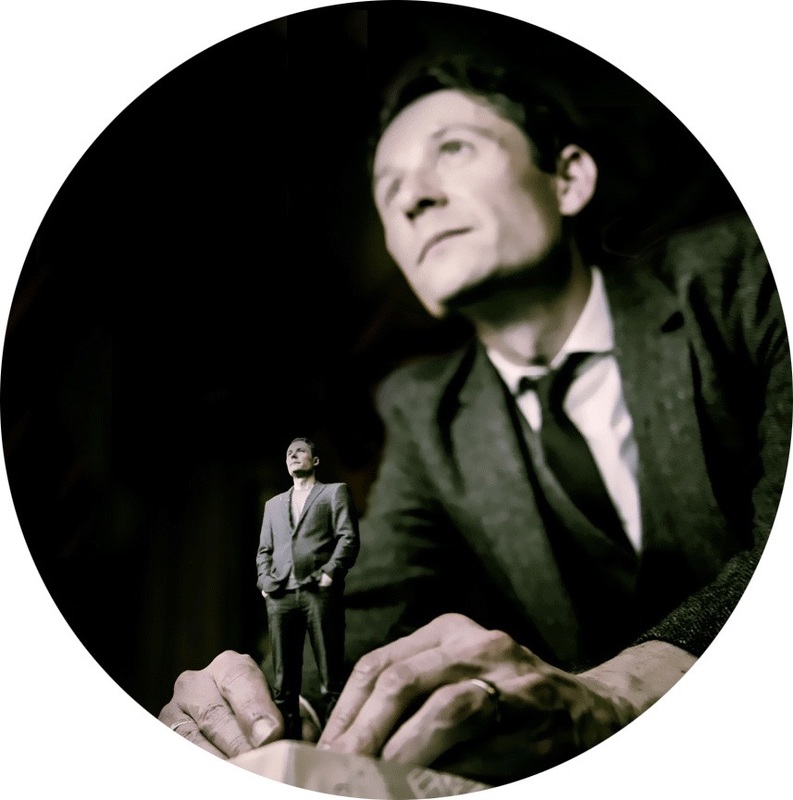|
This is a write-up of a recent event (23.02.18) I jointly co-ordinated with Michael Sean Gallagher, as part of the Festival of Creative Learning here at Edinburgh University. Michael has separately shared his own reflections of the event: I am linking to his piece although not reading it for the moment as I want to see how we experienced the activity from opposite sides of the table.
The ambitious title of our event was The Mobile Campus: Imagining The Future of Distributed and Digital Education at The University of Edinburgh. More succinctly, I saw two possibilities in the activity: first, that it might make the case for mobile learning as pedagogy; second, that we could raise questions about the way we conceptualise ‘campus’ and ‘university’ within increasingly digital learning environments. The ‘we’ in this case comprised Michael and myself, working with 24 participants. Without knowing the exact geographical spread of our group, we certainly had participants from across three continents, who joined us from a mixture of work, social, domestic and transitory spaces. For our part, Michael and I occupied a booth in the cafe of the University’s David Hume Tower. Our trans-continental class was made of learning technologists, academic staff, postgraduate students, doctoral and post-doctoral researchers and probably more besides. What everyone presumably had in common was an interest in exploring or shaping the future of digital education and pedagogy. Emphasising our interest in mobile learning, our promotional material explained that the event would be delivered through the Telegram messaging app and that participants could join us from wherever they were likely to find themselves at 1pm (UK time) on 23rd February. Telegram supports the easy (and relatively secure) sharing of images, sounds, words and other content: our event made good use of these features as participants responded through sound clips, photographs and typed messages to questions about the nature of the campus, community and pedagogy. As well as eliciting a multimodal conversation around the future of digital education, Michael and I used the format of the event to raise questions around traditional ways of thinking about the campus. The possibility that the campus is performed rather than being a collection of buildings is something that Michael and I have previously researched alongside our Digital Education colleague, Sian Bayne, as well as through a series of university workshops (references below). On this occasion, we were particularly interested in challenging the hierarchical ‘othering’ of the learning that takes place beyond the perimeter of the university’s real estate. Through our event we also saw an opportunity to blur the boundary between on-campus and online. We sought to achieve this firstly through the use of Telegram, where being physically present on a designated campus did not automatically presume some advantage over other locations or situations. Meanwhile, to dissolve the distinction between conventional and more social and domestic learning spaces, we visually projected our Telegram conversation, which was punctuated by images of participants’ learning spaces, into David Hume Tower. Here is is a sample of what participants shared: The visual traces of our wider campus were accompanied by a soundtrack, pulled together from participant audio recordings, combined with pieces of music nominated during discussion. Resulting from this, students and staff passing through the David Hume Tower cafe over lunchtime would have seen the Telegram dialogue thrown onto the wall of our booth, whilst experiencing a soundscape shaped by sounds from the wider learning space of the university: While this video clip is included to help explain how we made use of sound, it offers a further insight into our approach. In order that participants could see and hear what we were doing, Michael and I created a YouTube live stream, supported by Michael’s iPhone, an attachable fish-eye lens, a GorillaPod and a borrowed camera tripod. At the same time as merging the different learning spaces of our Telegram group with those in DHT, we were playing the scene back to the group. For a short time, at least, it felt like we were re-mixing the campus. Looking across some of the immediate feedback form our exercise I am really glad that our approach seemed to catch the imagination of some of the group:
What I am less sure about however is whether Michael and I struck the right balance between Telegram dialogue and attempting to engage with the group through the livestream. Although Michael and I had structured-in an ‘interlude’ where participants would shift their gaze from Telegram conversation to the live stream, before that happened we found ourselves attempting to simultaneously contribute to discussion through Telegram whilst responding orally through the live stream. I think perhaps the result was a bit messy (although certainly interesting). At the same time, I am not sure how well a Smartphone screen lends itself to flicking between the different spaces we were using.
All the same, when mobile pedagogy is sometimes seen as an outlier compared to more desk-based online education, I think it’s a testament to the possibilities of the form that participants were able to contribute whilst variously strolling for pizza at lunchtime, stuck in traffic or walking through the snow. This doesn’t mean that we should abandon the discussion board or other institutional collaborative spaces that are a staple of online learning, but I think our experience speaks volumes for the possibilities of mobile learning and how it can help us to re-think - and remix - the campus. References:
See also: Multimodality and mobile learning in Bremen The sonic spaces of online students
0 Comments
Leave a Reply. |
Search categories
All
I am a Lecturer in Digital Education (Education Futures), within the Centre for Research in Digital Education at The University of Edinburgh.
@james858499 [email protected] |
